Many gardeners transplant peppers into their garden. This can seem like a difficult task, but if done correctly, it can be an easy and successful process.
In this guide, we will answer some of the most common questions about transplanting peppers into the garden, as well as provide some useful tips to make the process go smoothly.
What is Transplanting?
Transplanting is a very important process for gardeners with plants. You can use it to move your plants from one place, like your patio or balcony, to a place where the sun shines more and there is less competition. If you have too many of one type of plant in an area that doesn’t seem appropriate, you can use this to get rid of them.

When peppers are grown in larger containers, they need to be transplanted when the seedlings have outgrown their pots. Young plants should never stay in one spot for more than two days or else it will cause them damage due its fast growth rate.
Soil should be loosened around the pepper and carefully lifted out of its current pot or flat before replanting in a new location. Peppers should be replanted at eye level so they continue growing straight forward without being crooked – this will help keep them healthy. [1]When to Transplant Peppers?
Peppers can be transplanted at any time of the year, but it is best to do so when the weather is warmer. This is because peppers need a temperature of 60°F or higher to grow. If the temperature is lower than this, your plant will die.
How to Transplant Peppers Into Garden?
In order to grow peppers, you need to start them indoors in most parts of the country. You can either plant the pepper seeds yourself or transplant plants that are already grown. The peppers will be ready for harvest after about 80 days (depending on the temperature).
The germination rates will be higher if you maintain this temperature range throughout the growth cycle.Transplanting your pepper plants is important so that they grow healthily and efficiently. If you don’t do it right, the plant will not have enough space to expand into when it’s time for harvest! You will need a pot that is at least six inches deep in order to plant your tree correctly. If you do not have a pot this size, you can also use a four inch tall maternity box.
When you’re ready to move your pepper plant from one pot into a new one, be sure that the soil in both pots are similar. Fill each pot with an inch of high-quality planting mix. Soak the mix with water until all dry patches disappear before carefully transplanting those tender roots!
Water the pepper plant well and place it in a warm, sunny location. Peppers need at least six hours of sunlight per day to grow. Keep the soil moist but not too wet.
The pepper plant is ready to be transplanted when it is about 8 inches tall. Make sure that the weather is not too cold and the soil temperature has reached at least 60 degrees Fahrenheit.
Adding compost or other organic matter to your soil is important for a lot of reasons. It will help improve the quality and fertility of the soil, which will in turn help you have good yields in future crops!
Dig a hole that is large enough to accommodate the root ball of your pepper plant. Gently remove it from its pot and place in there, making sure you loosen up any roots before planting!
Fill the hole with soil and water the plant well. Mulch around the base of the plant to help it retain moisture.
Peppers need to be kept moist, but not wet. When the soil is dry, you should add compost or other organic matter so that the plant has good drainage and stays cool. This will help the pepper get nutrients like water-soluble fertiliser, vitamins A & C, and hormones. Pests will stay away too!
If you see any pests or diseases on your pepper plants, be sure to take action immediately. There are a number of organic and chemical controls that can be used. [1]
- What you’ll need
- Pepper plants
- Shovel
- Trowel
- Peat moss
- Compost
- Step-by-step Instructions
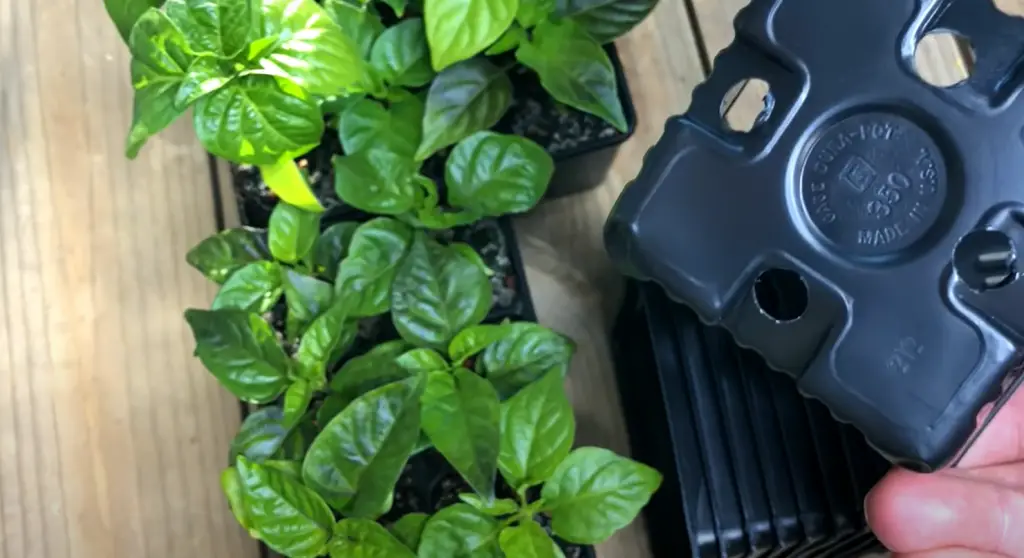
When you move your pepper plants indoors for the winter or transplant them, be careful not to damage them. These plants are delicate and can be harmed easily. A small amount of damage can affect the ability of a plant to produce fruit. If the temperature is not just right, the plant might never be able to harvest fruit again.
Follow these steps so that all will go well:
- To minimise stress on the plants, choose a cloudy day or transplant in the evening.
- Water the pepper plants well before transplanting.
- Carefully dig up the pepper plant, making sure not to damage the roots.
- Place the plant in its new location and backfill with soil.
- Water well and mulch around the base of the plant. [1]
Why Not Move Straight to Full-Sized Pots?
The answer is two-fold.
- First, by transplanting the peppers into garden beds or larger pots, you give them a chance to develop a strong root system.
- Second, it helps to harden off the plants so they can better tolerate the conditions they’ll face outdoors. This means that they are slowly getting used to the conditions outside so that when they are finally transplanted, they will be more likely to survive.
When you first plant a plant, it needs time to get used to its new surroundings. This is called hardening off. You do this by gradually exposing the plant to its new environment over a period of time. This helps the plant adjust without any shock and makes it more likely that the plant will grow well in its new home.
If you’re transplanting peppers into garden beds, choose a spot that gets full sun for at least six hours a day. The soil should be well-draining and rich in organic matter.
Transplanting peppers into pots is a tricky process that requires careful consideration. To care for succulents, you should make sure that the container they are in has enough space (12 inches or more), well-draining soil with plenty of organic matter, and watering at least every other day.
When transplanting peppers, handle them with care to avoid damaging the roots. To replant a plant, loosen the dirt around its base and place it in the new hole at the same depth it was before. Firmly press soil away from the root ball until it is firm enough to stay in place; then water well. This will help keep everything together nicely!
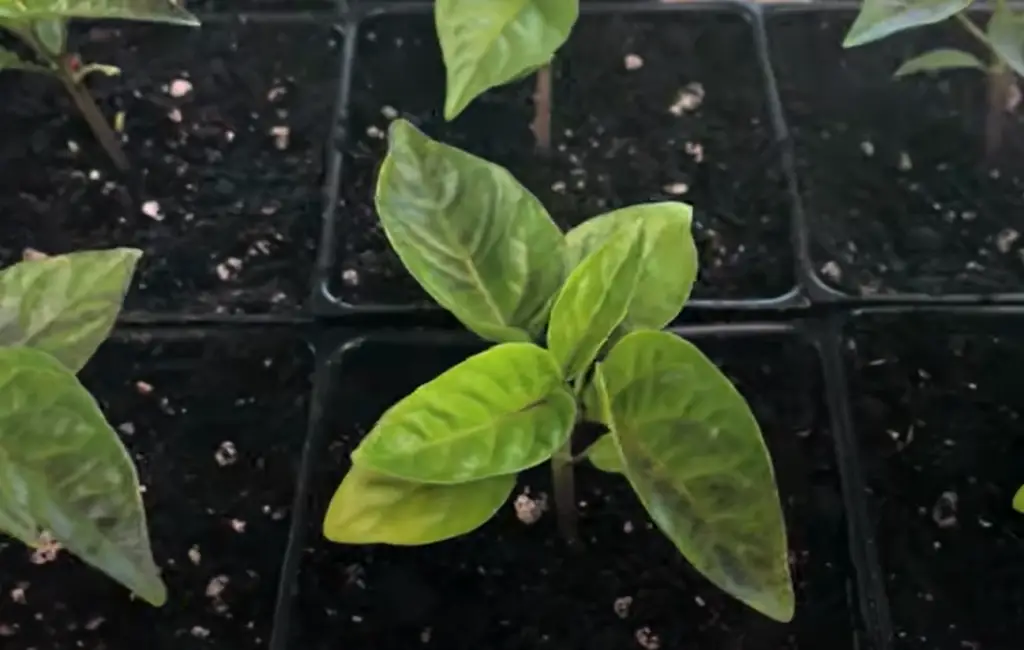
If you’re transplanting multiple peppers, space them 18 to 24 inches apart. This will give them room to spread out as they grow.
Peppers are a great addition to your garden. Once you have them planted, you will need to water them regularly. When there is no rain in the forecast, make sure to give them about an inch of water per week so the plants stay healthy but not too wet.
Fertilise the plants every two weeks with a balanced fertiliser like 20-20-20. Follow the directions on the package, as too much fertiliser can burn the plants. [1]
Tips
If you are planting a pepper plant in soil, make sure that it has at least 12 inches of depth. The long roots can get tangled if they don’t have enough room to grow. Be sure to check the drainage and moisture levels around the base of the plant.
When you transplant it, be careful not to damage any of the roots. Put it in a new container with soil, making sure that the soil is only covering the roots a little bit. Then give everything else one final round of watering, including your newly planted seeds or cuttings if you’re taking those routes this time around.
Place your pot in a sunny spot and water it regularly, making sure not to overdo it. With a little care, your pepper plant should thrive in its new home. [2]
Hardening Off
Now that you’ve got your pepper plants, it’s time to get them ready for transplanting. This process is called “hardening off” and helps acclimate the peppers so they can better withstand outdoor conditions!
To harden off your peppers, gradually increase the amount of time they spend outside. Once they can stay outside all day long, you can leave them in a sunny spot outdoors.
The weather forecast is always an important thing to monitor, especially when you are growing vegetables.
Frost can hurt them and so can extreme heat. [2]Transplanting
Peppers need warm weather to grow well. They like full sun and warm temperatures. Start indoors about two months before the last frost date in your area. This will give them time to grow enough roots before you transplant them outside. Make sure the soil is moist but not wet, and keep the temperature at about 80 degrees F.
Once the pepper seedlings have two sets of true leaves, they can be transplanted into larger pots filled with potting mix. Be sure to harden off the pepper plants for a week or two before transplanting them into the garden. To do this, set the plants outdoors in a location that is sheltered from wind and sun for a few hours each day, gradually increasing the amount of time they are outside over a seven- to 14-day period.
Transplanting peppers is simple and easy, but you should take care not to damage the plant. You can do this in early spring when plants are six-weeks old or eight weeks out of their pots, depending on the temperature.
Sunny locations with well drained soil work best! Make sure to add compost before you plant your seedlings. This will give them the nutrients they need for healthy growth. You’ll be able to enjoy delicious produce later in the summer.
Dig a hole for the pepper plant’s root ball. Gently remove it from its pot and place it in the hole. Fill up the sides of the hole with soil. When you mulch down later on, this will help keep moisture levels high around the plant’s roots and avoid any problems with wilting.
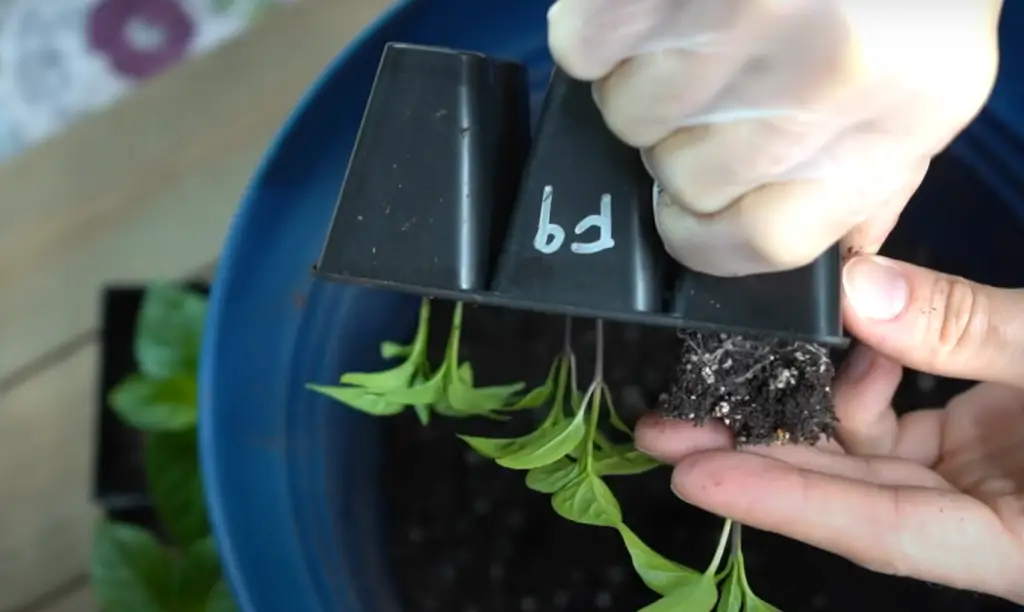
Pepper plants are one of the few houseplant varieties that require regular watering. To prevent root rot, they should be overwatered only during periods without rain. It’s best to apply about an inch per week from either rainfall or irrigation systems.
You should water-soluble fertiliser every two to three weeks to your pepper plants. The fertiliser will help your plants grow bigger and healthier. Make sure to follow the package directions so you don’t over or under fertilise your plants. [2]
Thriving Plants
Just because peppers are a hot little crop doesn’t mean they should be planted in the ground. Peppers need full sun, which means they need to be in an area where they will get a lot of direct sunlight. They also need well-drained soil so that the water does not stay on the plant for too long and make it wet.
The pH level of the soil should be around 7 for peppers to grow best. Lastly, peppers prefer warm weather, so you will want to wait until the temperature is consistently warm before moving them outside. If you don’t, your plant could easily die.
To prepare your planting site, dig up the soil to a depth of about 12 inches. Mix in some compost or manure and then create mounds 18 inches apart on top with good drainage capabilities for plants!
To plant your peppers, first gently remove the pepper plant from its pot.
You can loosen the roots with your fingers. Then set the plant on top of a mound of soil. Gently firm the soil around the base of the plant, but be careful not to bury the stem. Finally, water well.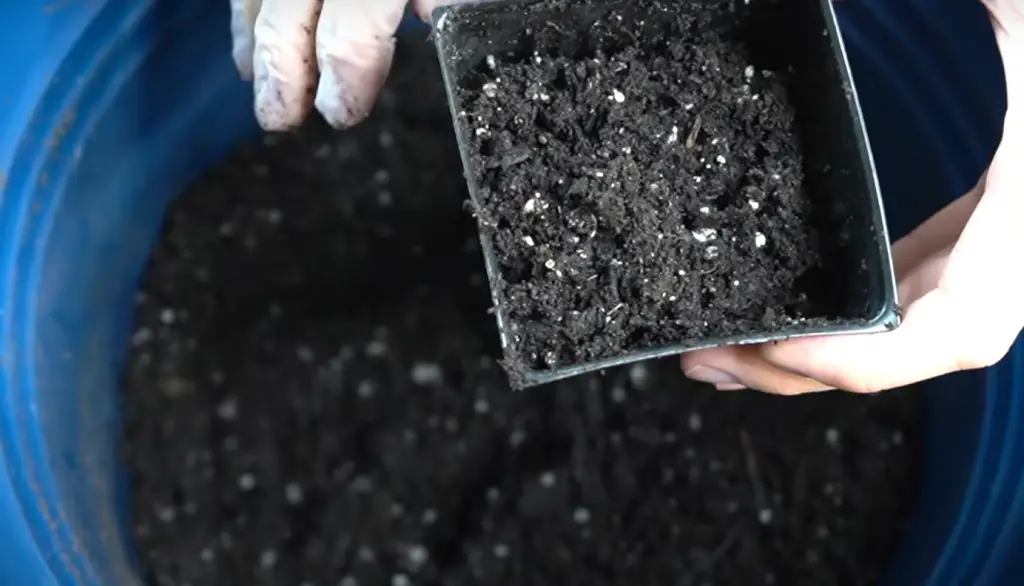
You can keep your garden healthy by having healthy plants. This will help to prevent pests like aphids or whiteflies from coming in and causing problems. To do this, you should start with good quality seeds. You should also know what kinds of bugs may be in the area before you decide which vegetables to grow.
FAQ
When Should I Transplant Peppers to My Garden?
The best time to transplant peppers is in the spring, after the last frost. This is when the weather is warm and they will thrive.
Another thing to think about is the size of your pepper plants. If they are still small, you should wait a bit longer before transplanting them. You want the roots to be well-established before moving them to a new location.
How Do You Transplant Pepper Plants to the Ground?
To transplant pepper plants to the ground, first dig a hole that is twice as wide and just as deep as the plant’s root ball. Loosen the roots gently with your fingers, then place the plant in the hole so that the top of the root ball is even with the soil surface. Backfill the hole with soil, then water the plant deeply.
Pepper plants do not tolerate cold temperatures well and will be damaged if you transplant them in the winter. If you must transplant peppers in the summer, choose a day when it is cool and cloudy so that the plants will not be shocked by the heat and sun.
How Deep Should Peppers Be Transplanted?
The depth that peppers should be transplanted depends on the size of the pepper plant. If the plant is small, then it can be transplanted a short distance. If the plant is large, then it will need to be transplanted further away. The roots of pepper plants are not very deep, so they don’t need to be planted too deeply.
Do Peppers Like to be Transplanted?
Yes and no. Peppers don’t like it when their roots are disturbed, so if you can, plant them in their final location. If not, try to transplant them quickly and with as little root disturbance as possible.
How Do You Transplant Peppers?
The best way to transplant peppers is to start with healthy seedlings that are about four to six weeks old. Carefully remove the seedling from its pot, making sure not to damage the roots. Plant the seedling in a hole that is twice as wide as the root ball and at the same depth as the pot. Fill in around the roots with soil, then water well.
When is the Best Time to Transplant Peppers?
The best time to transplant peppers is in the spring after all the danger of frost has passed. Peppers need warm weather to thrive, so wait until daytime temperatures are consistently above 70 degrees Fahrenheit before transplanting.
Useful Video:Transplanting Pepper Seedlings – When and How To Transplant – Pepper Geek
Conclusion
Transplanting peppers is a relatively easy process that can be done with just a few simple tools. By following these steps, you should be able to successfully transplant your peppers and get them ready for their new home in the garden.
Have you ever transplanted peppers before? What tips would you add? Share your thoughts and experiences in the comments below!
References:
- https://peppergeek.com/how-to-transplant-pepper-plants/
- https://pepperjoe.com/pages/gardening-tips-transplanting





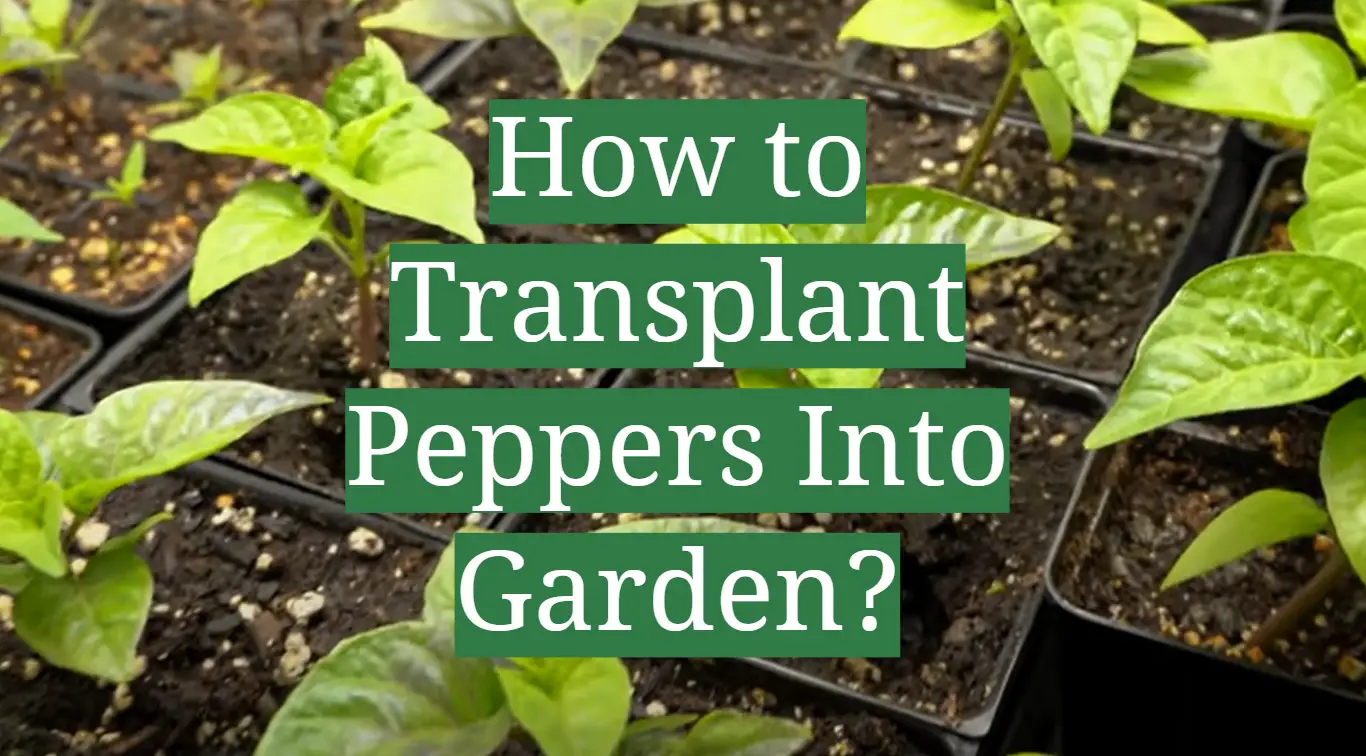




Leave a Reply
View Comments